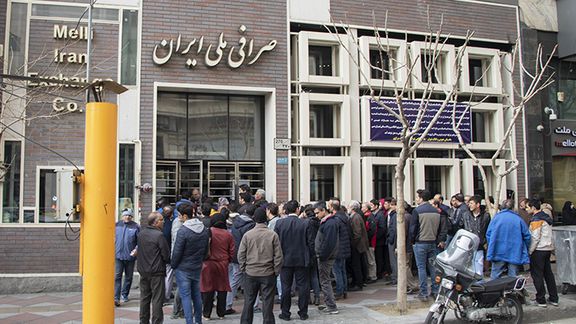Iran’s Higher Oil Revenues Offset By Large Capital Flight

Iran’s revenues from oil and other exports have increased but so has the rate of capital flight, figures from the Central Bank of Iran (CBI) indicate.

Iran’s revenues from oil and other exports have increased but so has the rate of capital flight, figures from the Central Bank of Iran (CBI) indicate.
The CBI report published last week indicates that in the fiscal year ending March 20, 2022, the country's revenues from exporting oil, gas, as well as oil and gas products and by-products, amounted to nearly $39 billion, $17 billion more than the previous fiscal year when oil prices were much lower.
The 84% increase in oil export revenues, however, was accompanied by a nearly 50% increase in capital flight in comparison with the previous fiscal year (ended March 20, 2021) as trust in the local economy and the political future of the country appeared to have diminished.
According to the latest OPEC figures, Iran earned more than $25 billion from selling crude oil in 2021. There have been numerous reports since late 2020 that Iran has been selling more oil, clandestinely, despite US sanction. Iranian shipments increased from as low as 200,000 barrels per day in 2019 to as high as more than one million barrels in January 2022. In 2020 Iran earned only around $8 billion due to enforcement of US sanctions.
The precise amount of capital leaving Iran is very difficult to calculate but it can be deducted from the official data on net capital account deficit. According to the CBI’s latest report, the net capital account deficit stood at $9.3 billion during the fiscal year ending March 20, 2022.
The hard currency outflow from the country is invested in various ways including in real estate, stocks, bonds, cryptocurrencies, or establishing of companies abroad. Investment in neighboring countries is particularly popular. The high rate of inflation and the huge drop in the value of the national currency have also hugely contributed to the urge to invest in such markets instead of domestic production and services.
In January this year Iran's central bank said that over $6 billion had been taken out of the country in six months (March 21-Sept. 20, 2021) because of political and economic uncertainty.
One of the indications of capital flight from Iran is the popularity of property acquisition in neighboring countries such as Turkey, the United Arab Emirates, and Georgia which often goes hand in hand with business investments.
According to a report by the state broadcaster’s Young Journalists Club (YJC) in April, the value of assets held by Iranians abroad was estimated at between 3 to 4 trillion dollars in 2015, about 10 times the country’s gross domestic production.
Experts say CBI figures indicate that Iranians are fearful about the safety of their investments despite promises of government officials last year that the 2015 nuclear deal, Joint Comprehensive Plan of Action (JCPOA) would be restored.
They argued that the administration of President Ebrahim Raisi does not tie the economy to the outcome of the nuclear talks and restoration of the JCPOA and therefore, the economy would not be damaged even if the talks to restore the deal failed and US sanctions continued.
Iran has also struggled to attract foreign investment since the United States withdrew from the 2015 nuclear deal and slapped sanctions on oil exports, international banking, and officials of the Islamic Republic. Any entity worldwide supplying dollars to Iran is vulnerable to punitive US action.
According to official figures, Iran's net capital account balance was positive from 2001 to 2005 when there was foreign investment. But in the following years, except in 2014, the balance has been in the negative.